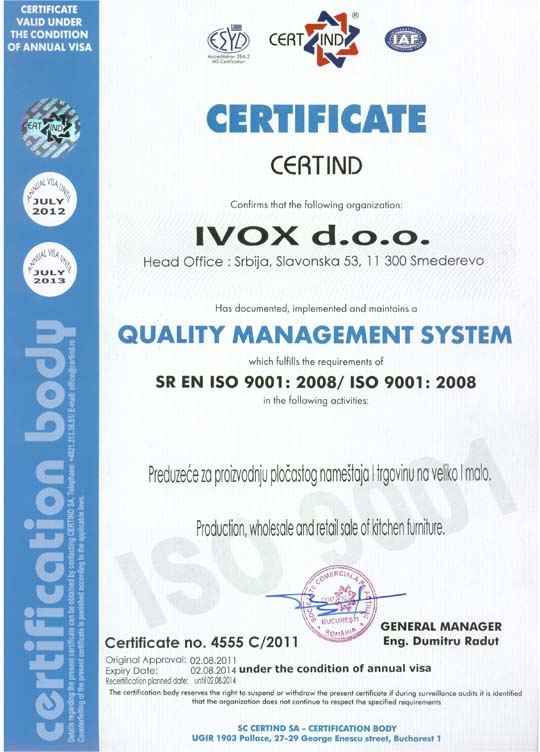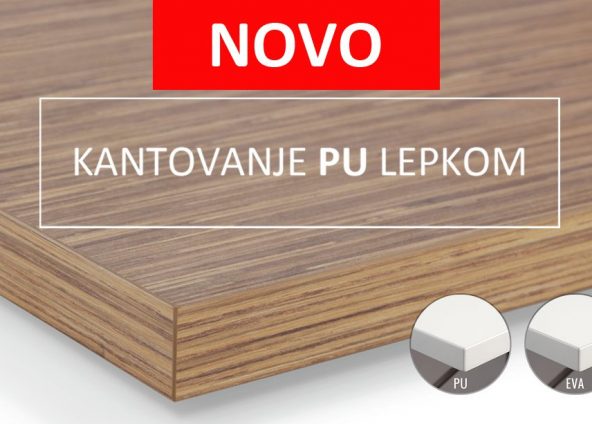ISO 9001 – Quality management system
ISO 9001 is an international standard that contains requirements for a quality management system in a business organisation that an organisation must fulfil by harmonising its working processes with international standards.
A quality system is a management system tool that leads to the achievement of set goals regarding the quality of business and service provision. This system consists of the organisational structure, the roles and responsibilities of participants, the processes and resources needed to manage the system. The ISO 9001 series standard consists of:
- ISO 9000 – Fundamentals and vocabulary: represents the concept of the management system as well as the terminology used
- ISO 9001 – Requirements: criteria that an organisation must meet if it wants to work in accordance with the standard and obtain a certificate.
- IS0 9004 – Guidelines for Performance Improvement: Based on eight principles of quality management which top managers use as a framework for managing the organisation while taking into account the needs of all stakeholders, and not just clients.

Principles of ISO 9001
The quality management system according to ISO 9001: 2008 standard, is based on eight principles of management. Management can use these principles as a framework for running the organisation to achieve better outcomes. The principles arise from the collective experience and knowledge of experts worldwide who participate in the work of the ISO / TC 176 Technical Quality Management Committee, which is responsible for developing and maintaining ISO 9000 standards.
Who uses ISO 9001?
ISO 9001 is suitable for all organisations that need to improve their management, regardless of the size or activity of the organisation. Also, ISO 9001 is compatible with other management system standards such as the OHSAS 18001 Occupational Health and Safety Assessment Series and ISO 14001 Environmental Management Systems. These systems can be integrated into one due to the same principles they share.
The purpose of this standard is to increase the efficiency of the organisation through the application of the process approach. Its advantage is to connect individual processes, organisational units and their interactions.
Defining the inputs and outputs as well as all resources in the processes makes a starting basis for planning, as well as feedback on customer satisfaction. This model increases the customer’s confidence in the product/service and leads to better positioning on the market.
Advantages of the implementation of ISO 9001
ISO 9001 specifies the basic requirements for a quality management system that an organisation must fulfil to prove its ability to consistent production (including services), thereby enhancing user satisfaction and compliance with legal regulations.
Prednosti implementacije ISO 9001:2008 standarda:
- acquiring and strengthening business confidence with current and, more importantly, potential clients,
- improving business capacity and productivity,
- focus on achieving business goals and expectations of clients,
- achieving and maintaining a stable level of product/service quality to meet the demands and expressed needs of clients,
- Increase customer satisfaction,
- Assuring that the desired level of quality has been achieved and that it is recertified,
- creating possibilities for expansion to new markets and increasing the share in the existing market,
- obtaining an ISO 9001 certificate by an accredited certification body,
- Possibility to participate and bid on tenders.




